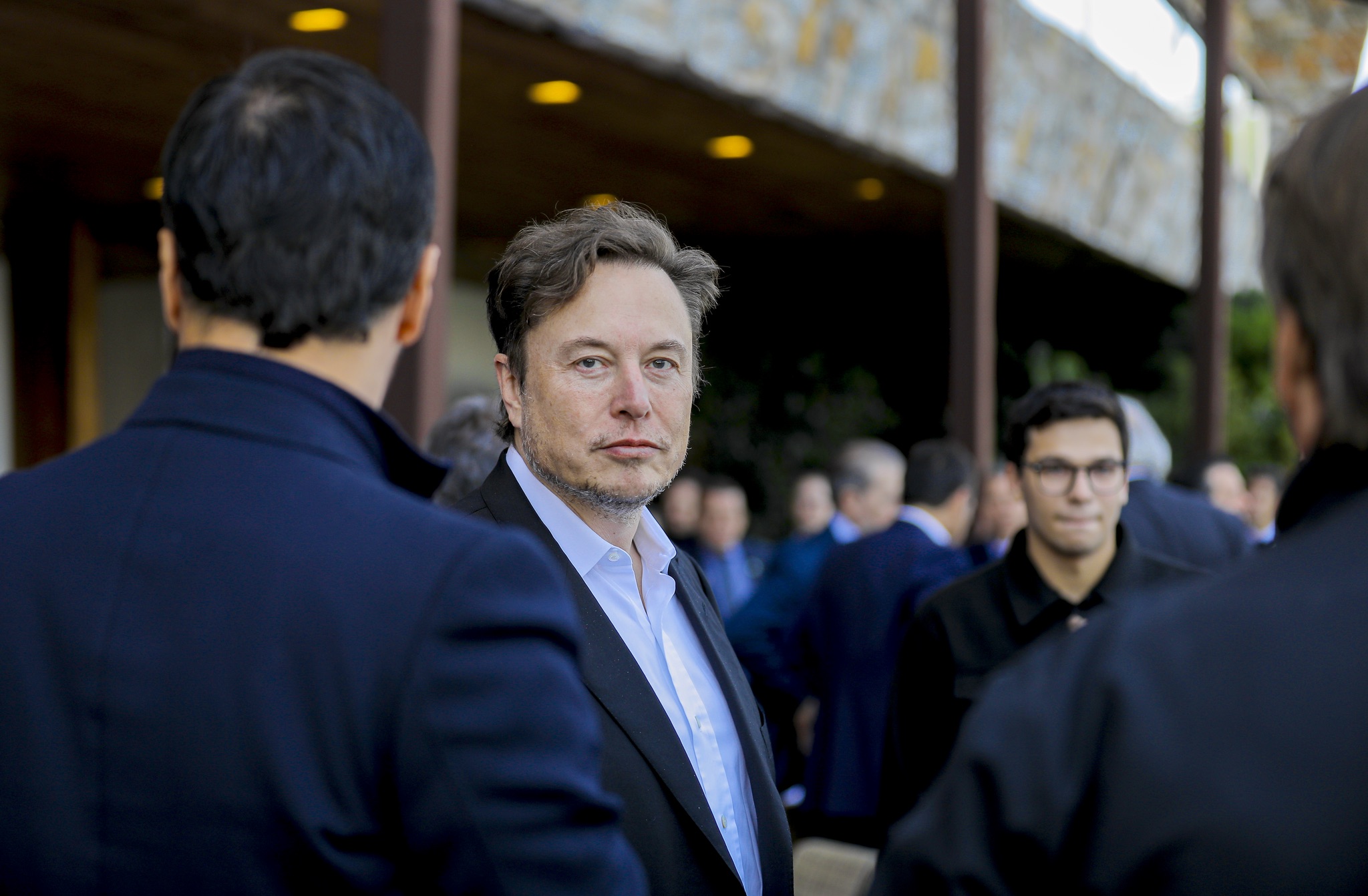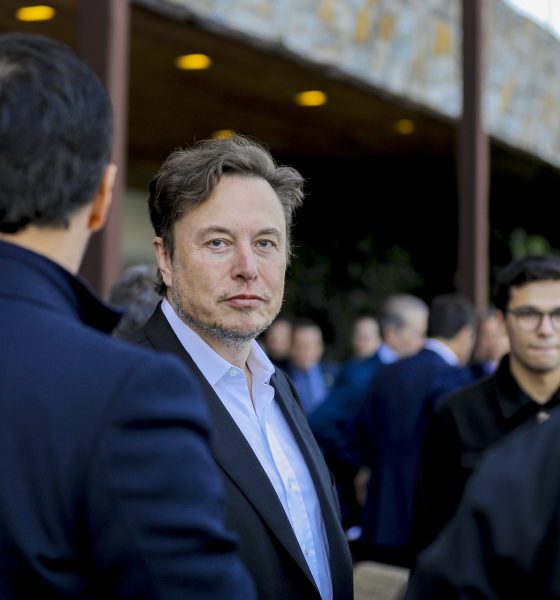

News
Elon Musk weighs in on Biden admin’s apparent anti-Tesla bias
The Biden administration’s apparent dislike of Tesla CEO Elon Musk is becoming more and more difficult to ignore. Over the past months, numerous federal agencies have been mobilized in multiple probes targeting several of the CEO’s businesses. Musk, for his part, recently noted on X that the administration’s disdain against himself appears to be partly motivated by Biden’s support of unions.
Musk shared his thoughts on X as a response to a video clip from the All-In Podcast, which featured the show’s hosts discussing some of the administration’s efforts against the CEO. These include investigations into an alleged glass house, complaints about SpaceX not hiring enough refugees to national security roles, and Starlink getting its $885 million contract canceled despite its place as the US’ best rural internet service.
Let’s not forget the White House giving Tesla the cold shoulder, excluding us from the EV summit and crediting GM with “leading the electric car revolution” in the same quarter that they delivered 26 electric cars (not a typo) and Tesla delivered 300 thousand.— Elon Musk (@elonmusk) December 24, 2023
The CEO chimed in, adding that the Biden White House also gave Tesla the cold shoulder during its 2021 EV Summit, and Biden himself credited GM CEO Mary Barra for leading the electric car revolution. Humorously enough, Biden credited GM for being a leader in electric vehicles during a quarter when the automaker delivered 26 electric cars and Tesla delivered about 300,000.
Musk’s comments brought even more discussions on whether Tesla’s use of a non-unionized workforce was truly the reason behind the Biden administration’s apparent dislike of anything related to Musk. To be fair, former White House Press Secretary Jen Psaki did hint after the 2021 EV Summit that Tesla was not invited to the event because the company does not use unionized labor.
“We, of course, welcome the efforts of all automakers who recognize the potential of an electric vehicle future and support efforts that will help reach the president’s goal. And certainly, Tesla is one of those companies. Today, it’s the three largest employers of the United Auto Workers, and the UAW president who will stand with President Biden as he announces his ambitious new target, but I would not expect this is the last time we talk about clean cars, the move toward electric vehicles, and we look forward to having a range of partners in that effort,” she said, later adding “I’ll let you draw your own conclusions.”
Most of the Democratic Party is controlled by the unions – they carry far more weight than the environmentalists – and Biden particularly so (he gladly admits it).
In Biden’s speech, posted on https://t.co/eHQYHPqS6G, he literally says “the UAW elected me”.
The White House…— Elon Musk (@elonmusk) December 25, 2023
Musk, for his part, noted that Biden’s avid support for unions is likely the reason behind the administration’s dislike of Tesla and his other ventures. Musk highlighted that Biden has personally credited the UAW for his election and that the cold shoulder from the White House started well before he acquired Twitter and far before he started posting controversial points on social media.
“Most of the Democratic Party is controlled by the unions – they carry far more weight than the environmentalists – and Biden particularly so (he gladly admits it). In Biden’s speech, posted on WhiteHouse.gov, he literally says ‘the UAW elected me.’ The White House cold shoulder started well before I ‘said controversial things,’” Musk wrote.
Don’t hesitate to contact us with news tips. Just send a message to simon@teslarati.com to give us a heads up.

News
Tesla FSD fleet is nearing 7 billion total miles, including 2.5 billion city miles
As can be seen on Tesla’s official FSD webpage, vehicles equipped with the system have now navigated over 6.99 billion miles.

Tesla’s Full Self-Driving (Supervised) fleet is closing in on almost 7 billion total miles driven, as per data posted by the company on its official FSD webpage.
These figures hint at the massive scale of data fueling Tesla’s rapid FSD improvements, which have been quite notable as of late.
FSD mileage milestones
As can be seen on Tesla’s official FSD webpage, vehicles equipped with the system have now navigated over 6.99 billion miles. Tesla owner and avid FSD tester Whole Mars Catalog also shared a screenshot indicating that from the nearly 7 billion miles traveled by the FSD fleet, more than 2.5 billion miles were driven inside cities.
City miles are particularly valuable for complex urban scenarios like unprotected turns, pedestrian interactions, and traffic lights. This is also the difference-maker for FSD, as only complex solutions, such as Waymo’s self-driving taxis, operate similarly on inner-city streets. And even then, incidents such as the San Francisco blackouts have proven challenging for sensor-rich vehicles like Waymos.
Tesla’s data edge
Tesla has a number of advantages in the autonomous vehicle sector, one of which is the size of its fleet and the number of vehicles training FSD on real-world roads. Tesla’s nearly 7 billion FSD miles then allow the company to roll out updates that make its vehicles behave like they are being driven by experienced drivers, even if they are operating on their own.
So notable are Tesla’s improvements to FSD that NVIDIA Director of Robotics Jim Fan, after experiencing FSD v14, noted that the system is the first AI that passes what he described as a “Physical Turing Test.”
“Despite knowing exactly how robot learning works, I still find it magical watching the steering wheel turn by itself. First it feels surreal, next it becomes routine. Then, like the smartphone, taking it away actively hurts. This is how humanity gets rewired and glued to god-like technologies,” Fan wrote in a post on X.
News
Tesla starts showing how FSD will change lives in Europe
Local officials tested the system on narrow country roads and were impressed by FSD’s smooth, human-like driving, with some calling the service a game-changer for everyday life in areas that are far from urban centers.

Tesla has launched Europe’s first public shuttle service using Full Self-Driving (Supervised) in the rural Eifelkreis Bitburg-Prüm region of Germany, demonstrating how the technology can restore independence and mobility for people who struggle with limited transport options.
Local officials tested the system on narrow country roads and were impressed by FSD’s smooth, human-like driving, with some calling the service a game-changer for everyday life in areas that are far from urban centers.
Officials see real impact on rural residents
Arzfeld Mayor Johannes Kuhl and District Administrator Andreas Kruppert personally tested the Tesla shuttle service. This allowed them to see just how well FSD navigated winding lanes and rural roads confidently. Kruppert said, “Autonomous driving sounds like science fiction to many, but we simply see here that it works totally well in rural regions too.” Kuhl, for his part, also noted that FSD “feels like a very experienced driver.”
The pilot complements the area’s “Citizen Bus” program, which provides on-demand rides for elderly residents who can no longer drive themselves. Tesla Europe shared a video of a demonstration of the service, highlighting how FSD gives people their freedom back, even in places where public transport is not as prevalent.
What the Ministry for Economic Affairs and Transport says
Rhineland-Palatinate’s Minister Daniela Schmitt supported the project, praising the collaboration that made this “first of its kind in Europe” possible. As per the ministry, the rural rollout for the service shows FSD’s potential beyond major cities, and it delivers tangible benefits like grocery runs, doctor visits, and social connections for isolated residents.
“Reliable and flexible mobility is especially vital in rural areas. With the launch of a shuttle service using self-driving vehicles (FSD supervised) by Tesla in the Eifelkreis Bitburg-Prüm, an innovative pilot project is now getting underway that complements local community bus services. It is the first project of its kind in Europe.
“The result is a real gain for rural mobility: greater accessibility, more flexibility and tangible benefits for everyday life. A strong signal for innovation, cooperation and future-oriented mobility beyond urban centers,” the ministry wrote in a LinkedIn post.
News
Tesla China quietly posts Robotaxi-related job listing
Tesla China is currently seeking a Low Voltage Electrical Engineer to work on circuit board design for the company’s autonomous vehicles.

Tesla has posted a new job listing in Shanghai explicitly tied to its Robotaxi program, fueling speculation that the company is preparing to launch its dedicated autonomous ride-hailing service in China.
As noted in the listing, Tesla China is currently seeking a Low Voltage Electrical Engineer to work on circuit board design for the company’s autonomous vehicles.
Robotaxi-specific role
The listing, which was shared on social media platform X by industry watcher @tslaming, suggested that Tesla China is looking to fill the role urgently. The job listing itself specifically mentions that the person hired for the role will be working on the Low Voltage Hardware team, which would design the circuit boards that would serve as the nervous system of the Robotaxi.
Key tasks for the role, as indicated in the job listing, include collaboration with PCB layout, firmware, mechanical, program management, and validation teams, among other responsibilities. The role is based in Shanghai.
China Robotaxi launch
China represents a massive potential market for robotaxis, with its dense urban centers and supportive policies in select cities. Tesla has limited permission to roll out FSD in the country, though despite this, its vehicles have been hailed as among the best in the market when it comes to autonomous features. So far, at least, it appears that China supports Tesla’s FSD and Robotaxi rollout.
This was hinted at in November, when Tesla brought the Cybercab to the 8th China International Import Expo (CIIE) in Shanghai, marking the first time that the autonomous two-seater was brought to the Asia-Pacific region. The vehicle, despite not having a release date in China, received a significant amount of interest among the event’s attendees.








